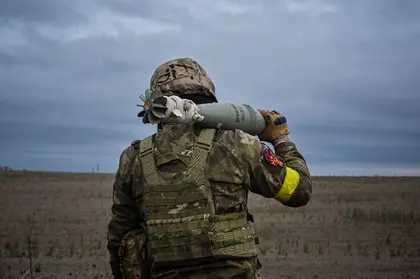Russia invaded neighbouring Ukraine on Feb. 24, sparking the worst conflict in Europe in decades.
Thousands of civilians have been killed in the war, which took a dramatic turn on Wednesday after Russia ordered its troops to retreat from Kherson after a ferocious battle by Ukrainian forces to recapture the occupied southern city.
JOIN US ON TELEGRAM
Follow our coverage of the war on the @Kyivpost_official.
Here is a timeline of key moments:
– February: invasion –
Russian President Vladimir Putin announces a “special military operation” in Ukraine on Feb. 24.
He says this is to protect the Russian-speaking, self-declared separatist republics of Luhansk and Donetsk in the east of Ukraine, whose independence he has just recognized.
He says he wants to “de-Nazify” Ukraine, a former Soviet republic, and demands a guarantee it will never join the NATO military alliance.
A full-scale invasion starts, with missile strikes on several Ukrainian cities.
Ukrainian President Volodymyr Zelensky stays in the capital Kyiv to lead the resistance.
The West imposes unprecedented sanctions on Russia. The European Union and United States send weapons to Ukraine. The aid pledged by Washington rises into the billions as the months pass.
– March: advances in south but Kyiv holds –
Russian troops attack Ukraine’s south coast, seizing the city of Kherson, close to the Crimean Peninsula, which Moscow annexed in 2014.
Russian forces also attempt to surround Kyiv and take Ukraine’s second city Kharkiv in the northeast but meet fierce resistance and major logistical difficulties.

1,100 North Korean Casualties in Russia-Ukraine War: Seoul
A month into the fighting, Russia withdraws from the Kyiv area and the north to focus on the eastern industrial Donbas region (Lugansk and Donetsk), partly held by separatists, along with the south.
– April: war crimes revealed –
In early April, scores of corpses of murdered civilians are discovered in Kyiv suburbs and northern towns that Russian forces had occupied.
The discoveries spark an international outcry.
– May: Mariupol falls –
On May 21, Russia announces the fall of the strategic southeastern port city of Mariupol, which had been relentlessly bombed since the start of the war.
Ukrainian troops, who had held out for weeks at a steelworks in the city, surrender.
Sweden and Finland request membership of NATO, fearing they could be future targets of Russian aggression.
– June: Donbas battle rages –
In June, Russia takes the Donbas city of Severodonetsk after one of the bloodiest battles of the war, followed soon after by the neighboring city of Lysychansk.
Ukraine pleads for more heavy weapons from the West.
– July: grain unblocked, gas supplies cut –
On July 22, Kyiv and Moscow sign a deal to resume grain exports from Ukraine, in a bid to relieve a global food crisis caused by Russia’s blockade of the country’s ports.
Russian gas giant Gazprom slashes its supply to Europe through the Nord Stream pipeline before turning off the tap altogether, fueling fears of gas shortages in Europe this winter.
– August: nuclear fears –
Ukraine and Russia blame each other for shelling around the Russian-occupied Zaporizhzhia nuclear power plant, amid fears of a possible nuclear disaster.
Kyiv launches a major offensive to retake Kherson.
– September: annexation –
Ukraine retakes hundreds of towns and villages in a lightning counter-offensive around Kharkiv.
On Sep. 21, Putin calls up 300,000 reservists, sparking an exodus of Russian men of military age to neighboring countries.
Between Sep. 23 and 27, Kremlin-backed authorities hold hasty referendums in the Moscow-held Ukrainian regions of Luhansk, Donetsk, Kherson and Zaporizhzhia on joining Russia.
The votes are dismissed by Kyiv and the West as a sham.
On Sep. 27, the Kremlin claims victory in the ballots.
On Sep. 30, Putin formally annexes them at a grand ceremony at the Kremlin.
– October: energy infrastructure pounded –
On Oct. 8, Ukrainians celebrate after an explosion causes major damage to a bridge linking Crimea to the Russian mainland — a symbol of Moscow’s annexation of the peninsula.
Putin blames Ukrainian secret services for the blast.
On Oct. 10, in an apparent retaliation, Russian forces launch a barrage of missile and drone strikes on cities across Ukraine, including Kyiv. The strikes, aimed chiefly at energy infrastructure, leave millions without power.
On Oct.19, Putin declares martial law in the four annexed regions.
– November: retreat from Kherson –
On Nov. 9, Moscow orders its troops to retreat from the city of Kherson in the face of advancing Ukrainian forces.
“Begin to pull out troops,” Russian Defence Minister Sergei Shoigu says at a televised meeting with Russia’s commander in Ukraine, Sergei Surovikin.
The move comes days after Russia claimed it had finished evacuating civilians from Kherson to its territory.
You can also highlight the text and press Ctrl + Enter






